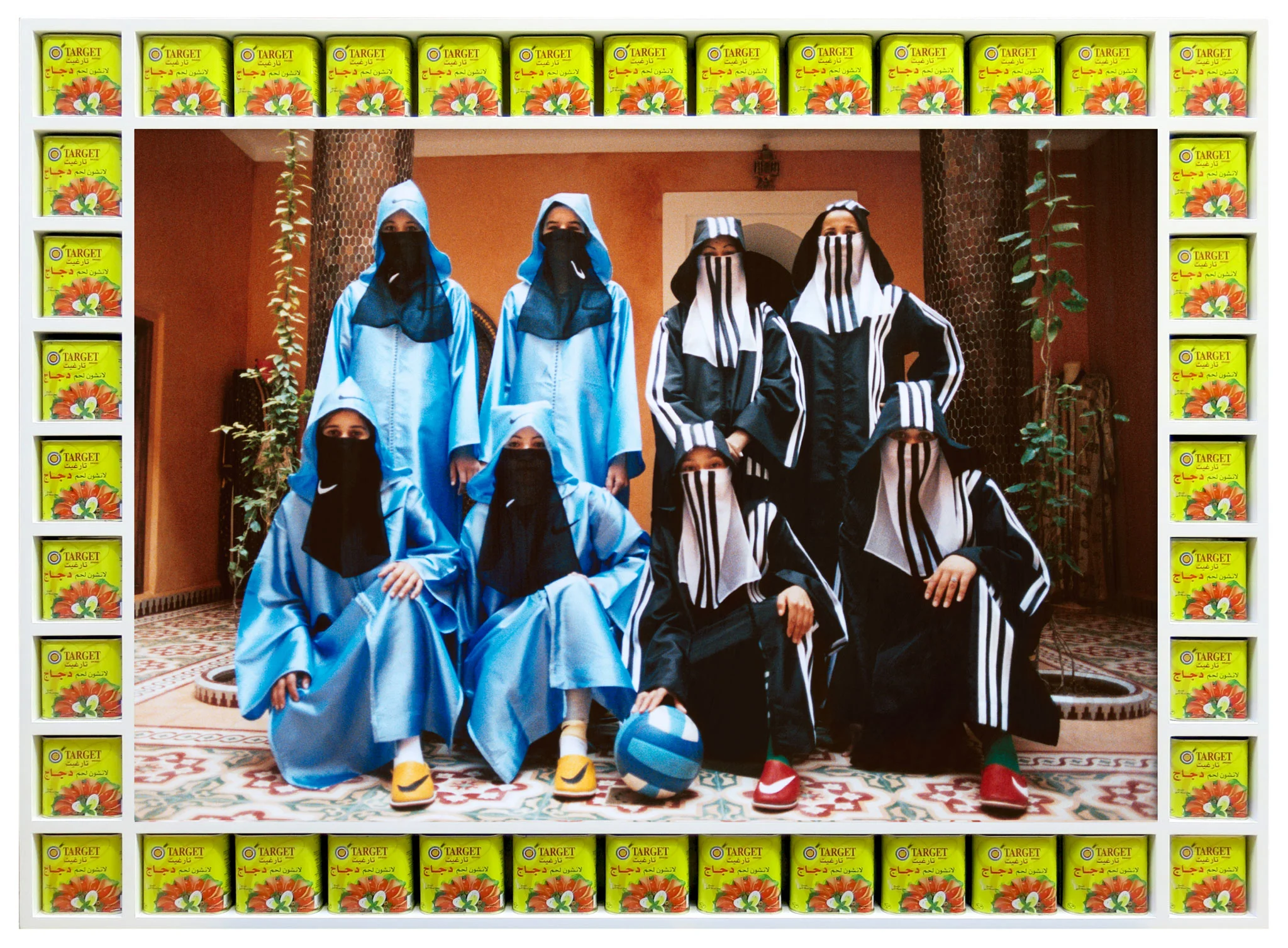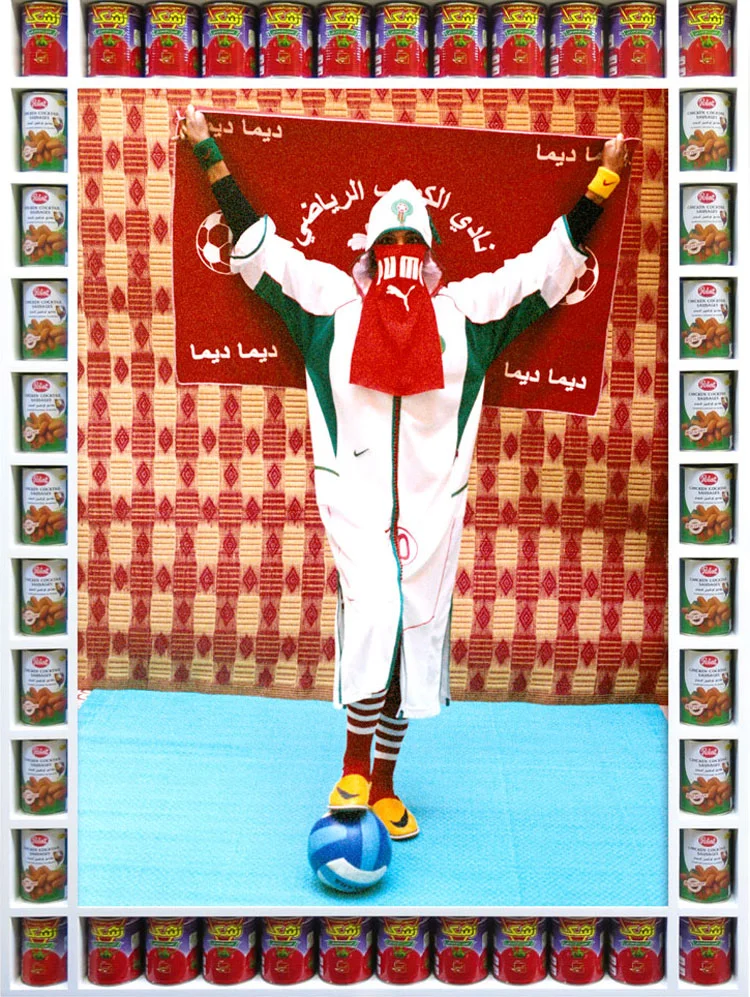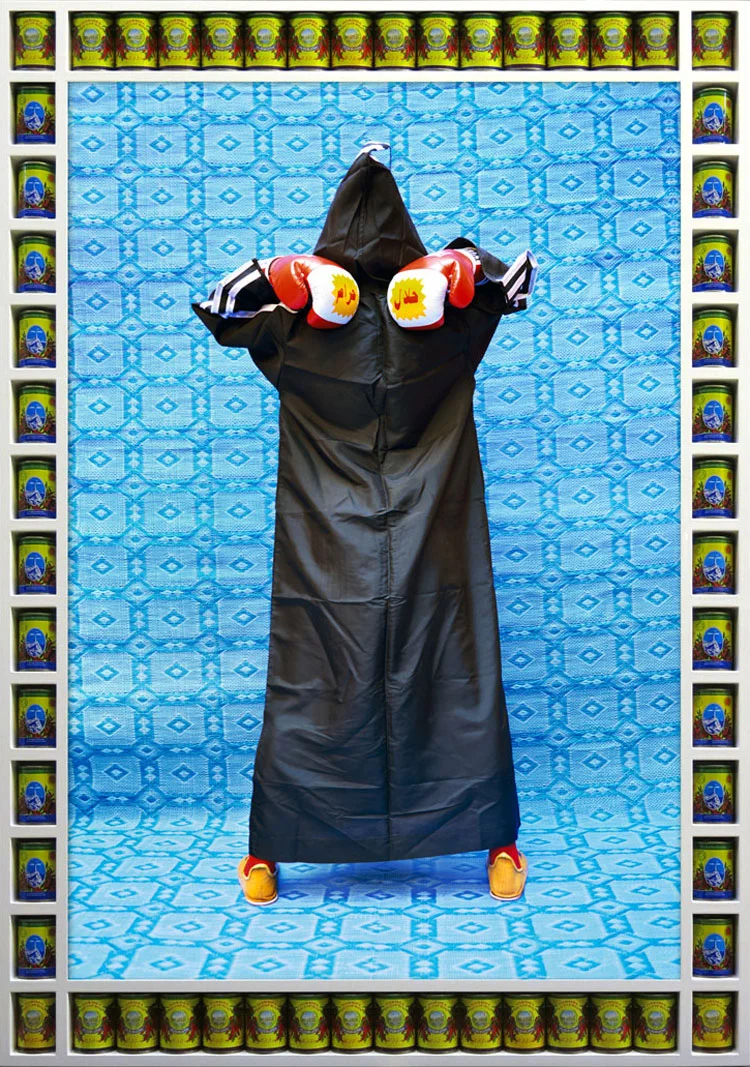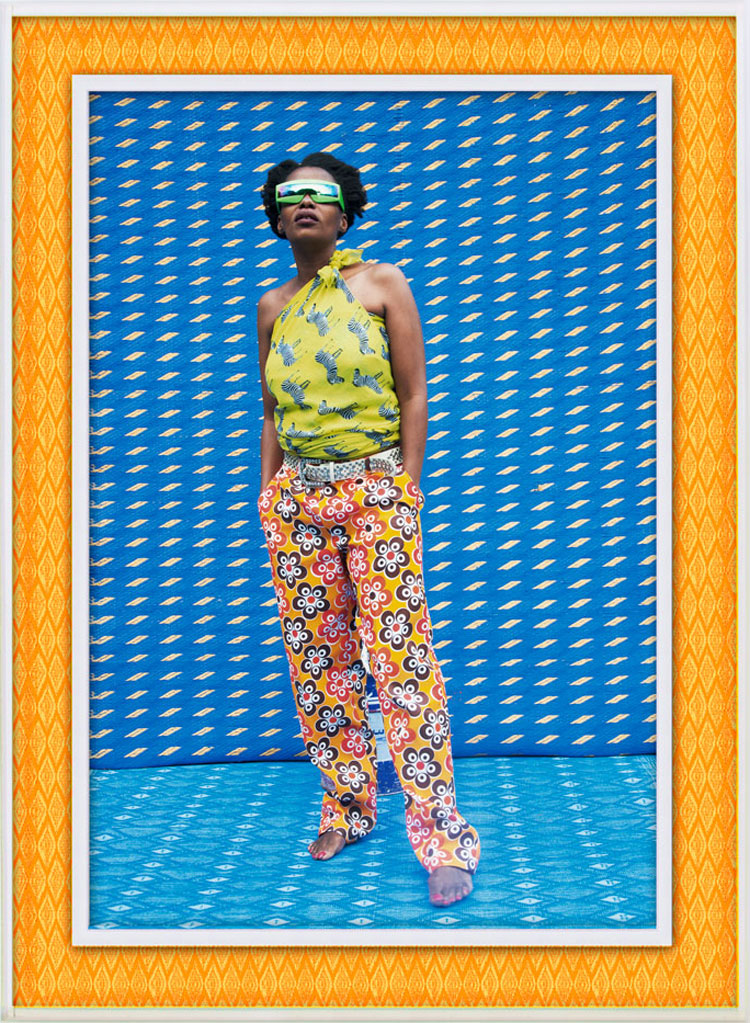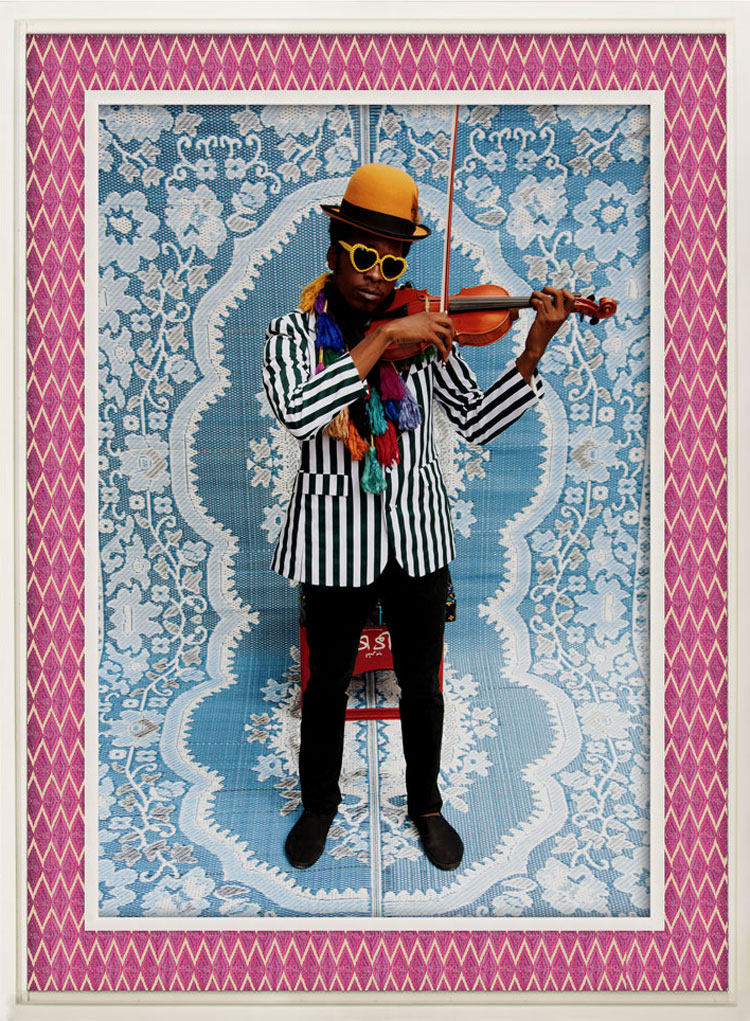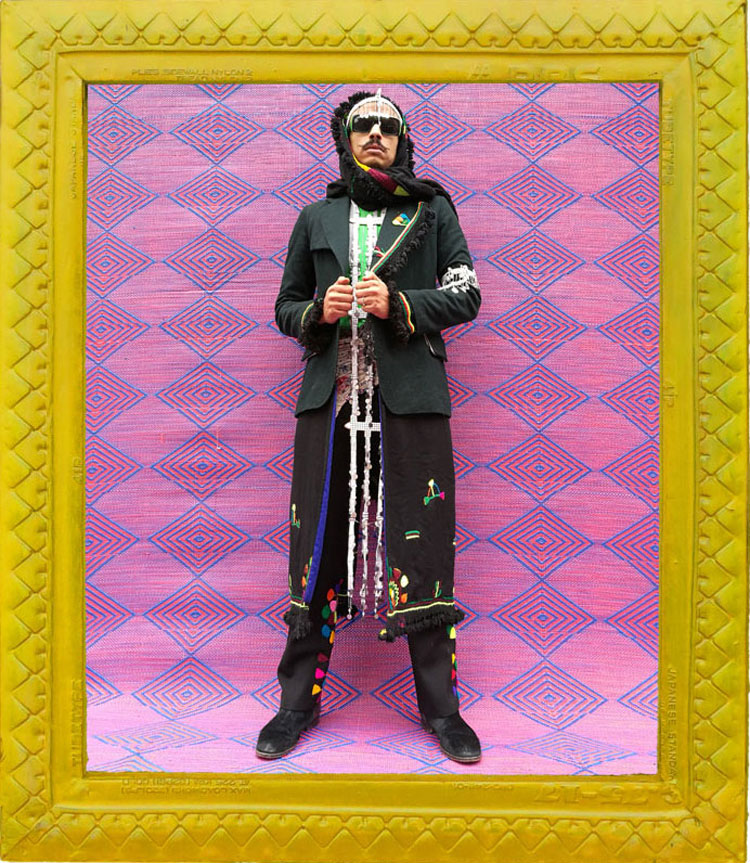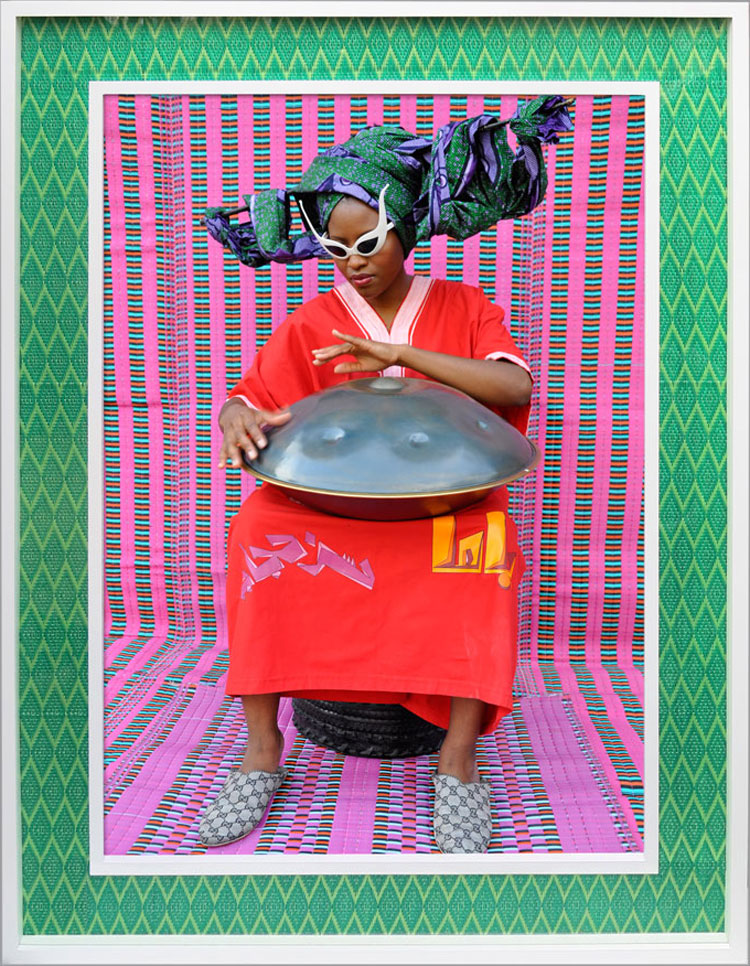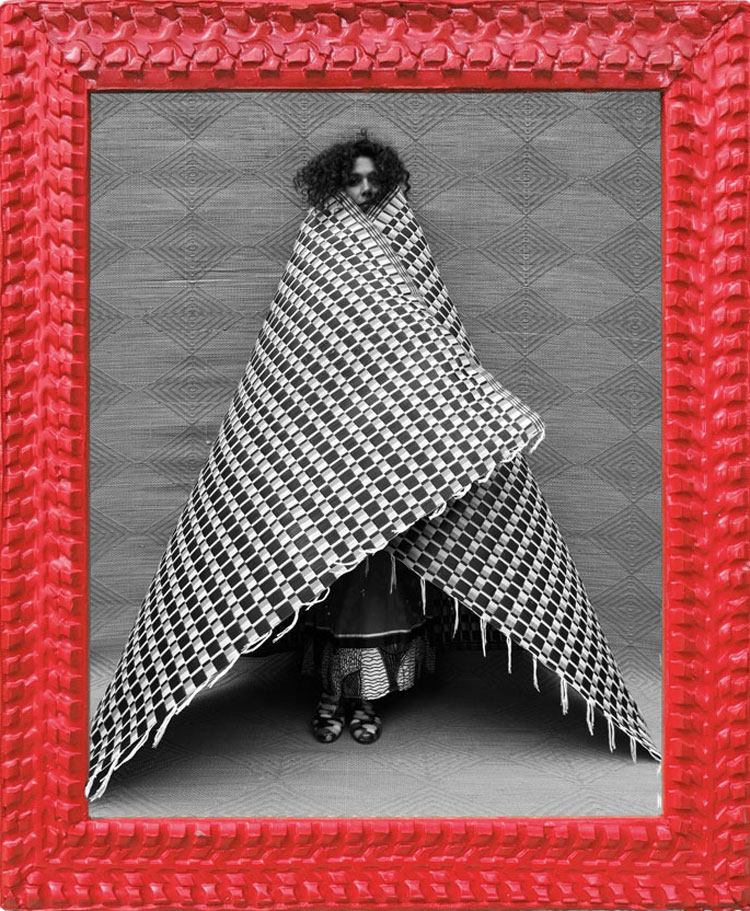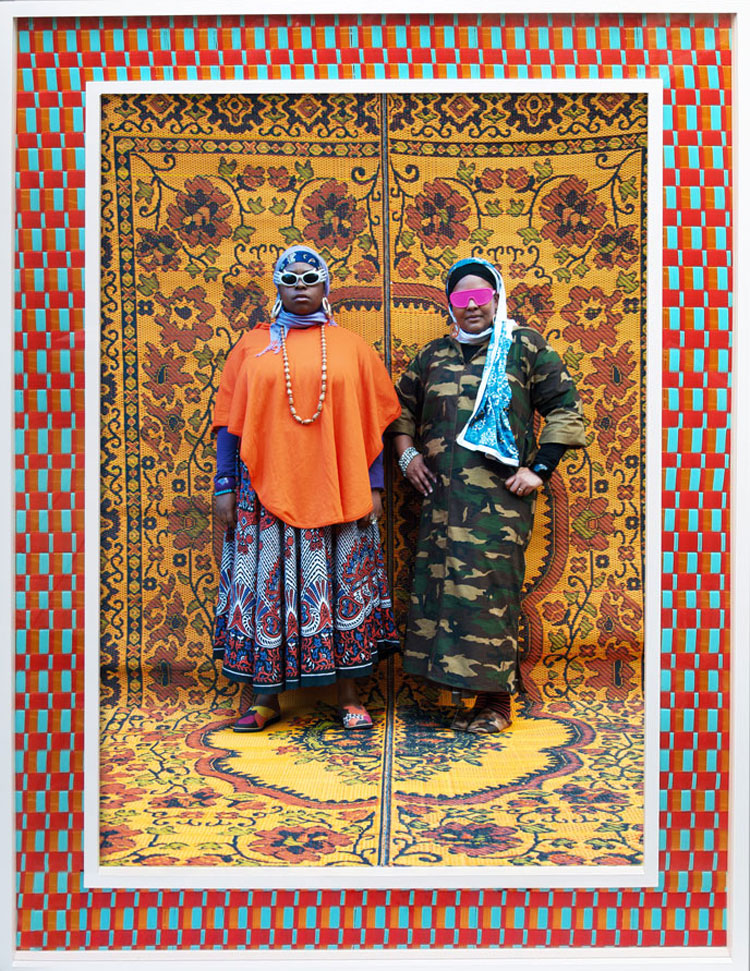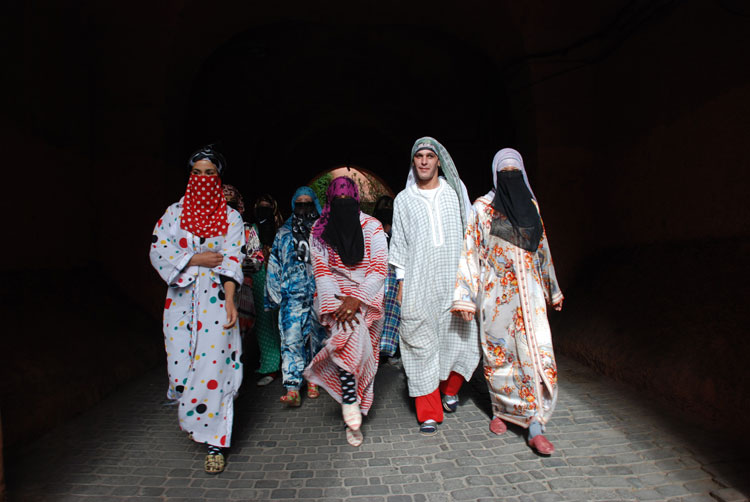In our ongoing series of Gallery
Talks, Emmanuel Balogun reflects on Afro-Arab-Asian relations through the artistic craft of Hassan Hajjaj
Hassan Hajjaj’s commanding output toys with the potent collision of Arab, Afro and Asian sensibilities with Western popular culture. It’s the unrelenting exuberance within his works that have given rise to his worldwide success. Today his art has come to celebrate the multilayered and transnational nature of the contemporary world in the thick of unrelenting globalisation.
Take for example his first feature-length film Karima: A Day in the Life of a Henna Girl, recently screen at the British Museum. It gives an insight into the daily grind of a real-life band of henna-tattoo artists who work and play in the heart of Marrakech. From morning to night they charm onlookers into trying out their bodily works of art. Tourists are easily seduced by the performative flair and effervescence of the group, who capitalise on their craft and the exoticised culture of the city upon which they base their livelihood. And when Karima and co don their scooters to zoom through its narrow streets, they are appropriately armed with a scorching soundtrack that sweeps and sinks audiences into new electronic sounds from the Sahel by route of the Sahara. Watch out because these are veil-wearing, motorbike-mounting (often taunting) citizens of the world. The film becomes a domain where tradition is disobediently fused with modernity and where the ebb and flow between high and low in African and Arab diasporas unite.
Moving image is just one sensory layer to Hajjaj’s extensive practice, which includes photography, textiles, furniture, graphic design, performance and installation. His audiences experience an amalgamation of unending textures, checkpoints and sounds from the far and familiar. The artist confronts Western perceptions of the Islamic world through his fearless, loving and independent characters. Whether famed artists, designers and musicians or unknown souk traders, snake charmers and water sellers, each willing collaborator has an unforgettable presence. Often wearing djellabas and caftans covered in counterfeit designer logos – and framed in a mosaic of everyday branded products - their attitude and fashions are at once old and new, African and Arabic, disguised and unforgettable. “They represent great talent, they exude style, they have something rare, individual and special about them - it’s in their blood and is enmeshed in their DNA,” Hajjaj explains.
"My subjects represent great talent, they
exude style, they have something rare,
individual and special about them - it’s in
their blood and is enmeshed in their DNA"
Riffing as much on the language of fashion photography and African studio photography as Pop Art and Fauvism, he celebrates his own multi-cultural existence and those of countless other global nomads in the diaspora who physically, mentally and spiritually cross multiple borders. The world has much to learn of historic, hybrid and new African sub-cultural clusters and through the work of Hajjaj we all become onlookers.
Born in Larache, Morocco in 1961, Hajjaj’s family moved to London when he was 13, where he became a club promoter and store owner before moving into styling and video production. He gradually taught himself photography, fully embracing the medium upon rediscovering Morocco through his camera lens in the 1990s. His oeuvre and reputation has since grown far beyond any existing label but his salon installations, which have popped up at galleries and festivals worldwide, help to bring all of his worlds together into interactive social spaces. His works have also been acquired by the Brooklyn Museum, Nasher Museum of Art, Newark Museum and The Victoria & Albert Museum among many other distinguished collections.
Hajjaj’s recent solo show La Salle de Gym des Femmes Arabes at The Third Line in Dubai was a continuance of his advocacy of strong and spirited Arab women seen in previous major series such as ‘Kesh Angels. As a man Hajjaj has never been inside a traditional women-only gym, which became the trajectory for re-imagining such a space by turning the gallery into a makeshift recreational centre inhabited by “creative and talented characters.”
The current exhibition My Rock Stars at Memphis Brooks Museum of Art features compositions of his independent musician friends including Marcus Toliver, Boubacar Kafando and The Venus Bushfires. The videos and imagery are presented in a salon-style environment devised to evoke the sass and feel of the Moroccan marketplace. “Having them singing shares their talent so the work becomes more about them than me,” Hajjaj explains. “When I was shooting Hindo Zahra at her home some birds flew in and started singing along with her, it was unreal! It’s about documents these people and their talent.”
Concurrently he has another solo show, Stylin’ by Hassan Hajjaj at Colette in Paris, a selection of portraits of friends and family dressed in the artist’s fantastical take on fashion. Additional work is also now on display at numerous group shows including Duro Olowu’s Making & Unmaking at Camden Arts Centre in London, Fashion Cities Africa at Brighton Museum and Islamic Art Now: Contemporary Art of the Middle East – part 2 at LACMA in Los Angeles. Fittingly his work travels as much as his subjects and preoccupations do.
Hassan Hajjaj: My Rock Stars is at Memphis Brooks Museum of Art until 4 September 2016 Stylin’ by Hassan Hajjaj is at Colette Paris until 27 August
Words Emmanuel Balogun
Visit Hassan Hajjaj

